The Dagger Jitsu is the new playboat from Dagger. It’s been a long time (in my opinion) since Dagger was at the forefront of playboat design. Many of the recent designs have been popular but have never tempted me back to the brand. This is a short initial review of the Dagger Jitsu.
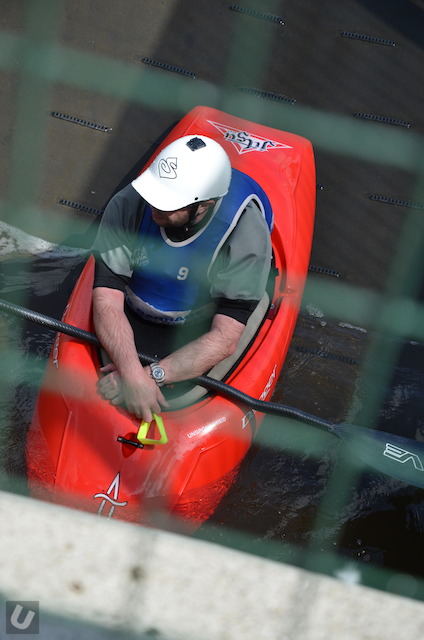
From Dagger:
Dagger brings decades of experience and team-tested, paddler-proven heritage to freestyle kayaking in the all new Jitsu Series. Tested and approved by some of the world’s most skilled paddlers, the Jitsu excels in surfing and aerial moves in wave play with volume proportions that allow skill development in hole play as well.
The Jitsu’s unique rocker profile, hull to rail relationship through the stern, carefully distributed centralized volume, and slicey tips make three dimensional combination moves in advancing hole play easier while creating a seamless blend of speed, looseness, and release on waves. The double-step carving rail above the release edge also helps the boat to grip and drive on wave faces for very controlled carving. The Jitsu maintains snappy edge-to-edge transition yet it is arguably the loosest hull on the market today.
Out-performing competitor freestyle kayaks downriver, the Jitsu is a solid all-around choice for those who want to enjoy big waves, holes on river, and freestyle competition too.
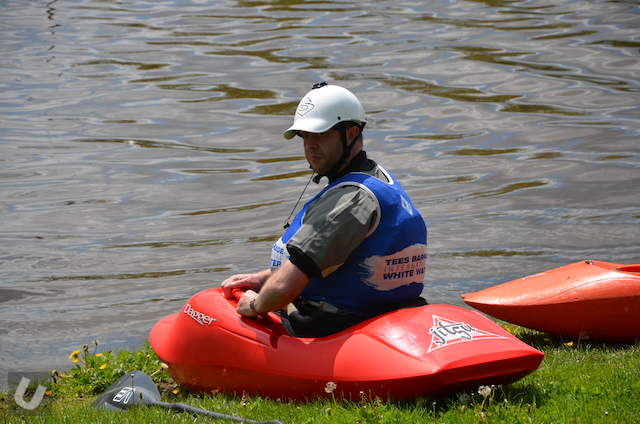
One of the biggest developments in kayak design over the last couple of years has been the quality of the outfitting available. Both Dagger and Wavesport use an outfitting system that includes a fully adjustable seat, hip pads and leg lifter system. Dagger call this Contour outfitting. I personally believe that this system is the most comfortable and versatile one on the market.
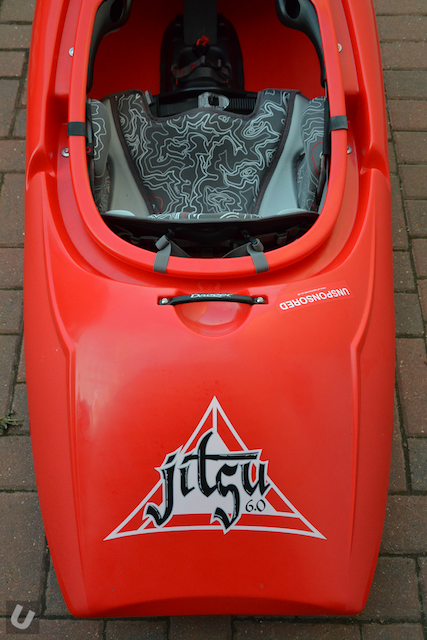
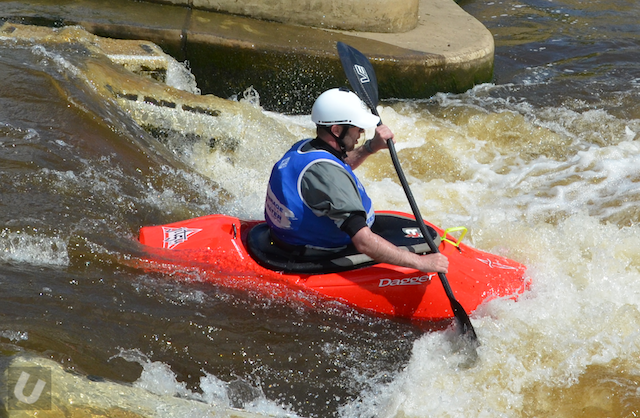
There are two distinct Contour outfitting systems. One for creek boats such as the Mamba and Nomad and one for playboats such as the Jitsu. They are in many ways the same, however, where the Contour outfitting of the Jitsu differs is the way in which the seat rail is fitted/fastened to the hull. In the Jitsu the rail is welded to the hull creating a pretty stiff boat. This helps transfer power from the paddler to the boat to the water.
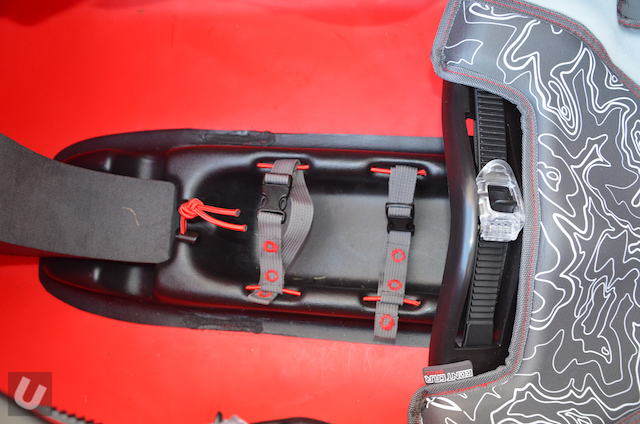
At present a plastic boat will not be as stiff as a composite model but the gap is being narrowed and this can be seen with the Jitsu. The new Contour outfitting is designed around ease of use and adjustment. For example the front edge of the seat can be raised or lowered through the use of the same kind of ratchet system that we are all familiar with on kayak backrests.

The hip pads come supplied with a range of shims that can be added/removed to provide the optimum fit. A couple of quick release buckles allow easy access to the back of the pads to add/remove the shims. The backrest provides a broad support base and adjusted via two ratchets positioned near the front of the cockpit.
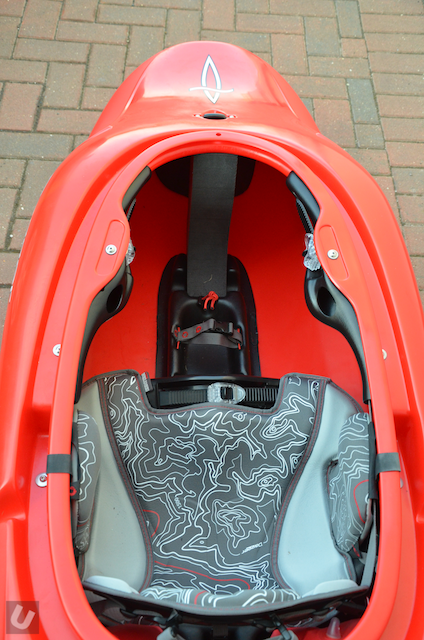
Although the newer crop of playboats are great for loops and other fancy aerial moves I prefer playboats that carve and are able to pull off some of the more old school moves as well. Having the best of both worlds in one boat has been the Holy Grail for kayak designers over recent years. This is due to the fact that the design features required for greater hull speed are quite different from those required for looping ability.
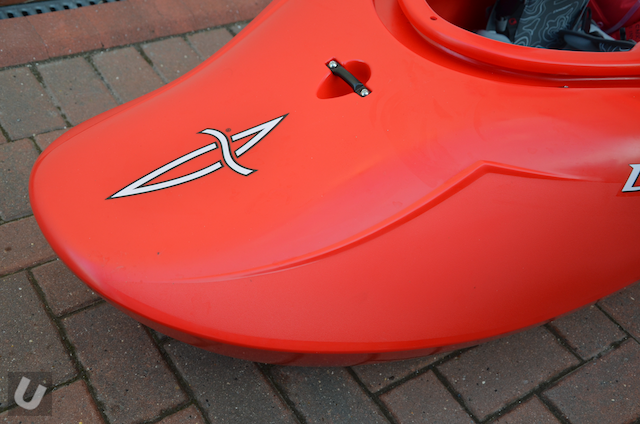
In the Jitsu design Dagger have managed to combine a progressive rocker and low stern rocker for speed. The double edge design also helps to give the Jitsu the kind of speed you would expect for a boat of a much longer length. When I found myself paddling through stoppers the Jitsu would actually accelerate and it felt like the shape of the stern actually encouraged the water to push the boat forward.
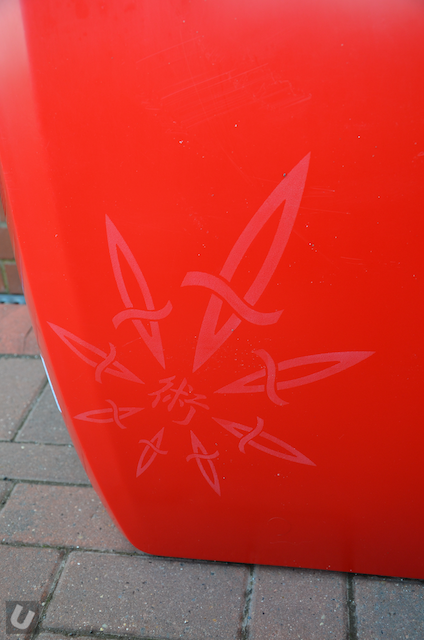
Despite the sharp edges and steep side walls there are no nasty surprises with how the boat performs when you transfer from the horizontal to vertical plane or from edge to edge. The Jitsu feels like a much longer boat when you cartwheel and feels very balanced when on end.
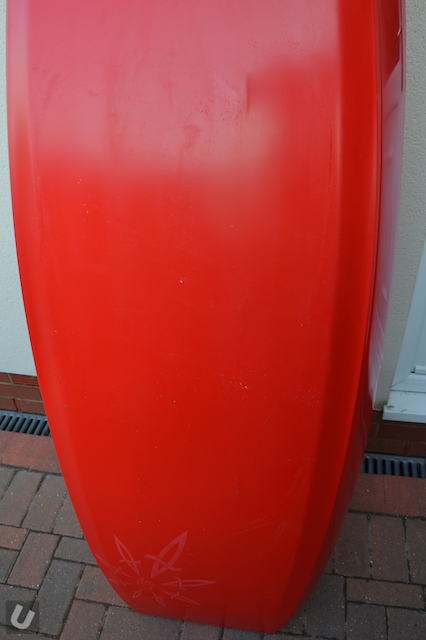
Setting up the Jitsu was super easy but I did find that the seat was not correctly fastened in. This was due to the fact the plastic “puck” that sits in the seat post rail was actually sitting above the rail! It took around 20 minutes to get the seat secure and to ensure that everything was as it should be.
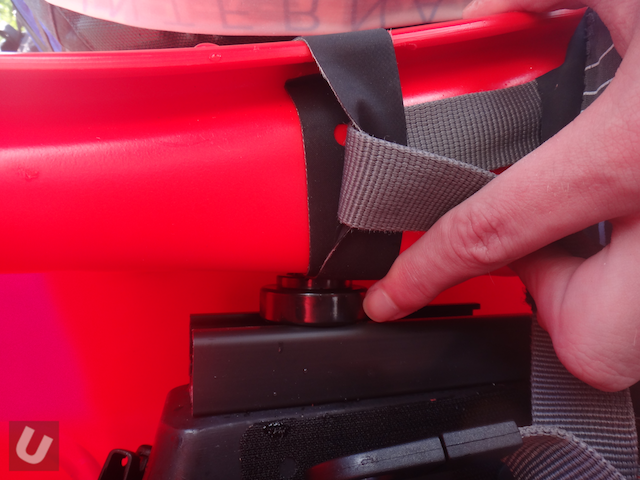
For most boats this won’t be a problem and the only messing around with the seat will be when you want to tweak it forward or backwards to adjust the trim. Moving the seat forward and back was very simple with only a nut behind the seat needing to be loosened off. What is quite nice is that the seat system has a gauge that allows you to adjust/position the seat with a high level of accuracy. I always like to try the seat in a number of positions I found that moving the seat too far forward made the Jitsu a little too twitchy.
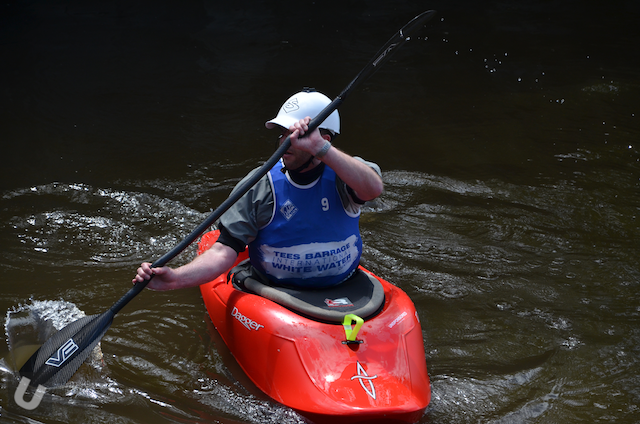
For me the best position for the seat is just forward of centre. The amount of foot room in the Jitsu is great. Rather than wearing my normal low profile Teva shoes I was able to wear a pair of much chunkier Astral Brewers without losing feeling in my feet or legs. The footrest is made from one key block of foam with a number of shims that can be added or removed depending on your height and/or preferred fit. I wasn’t convinced about the shape of the footrest foam before putting it in the boat, but after spending hours using it I am convinced. This might be the first time I haven’t had to trim/customise a foam footrest.
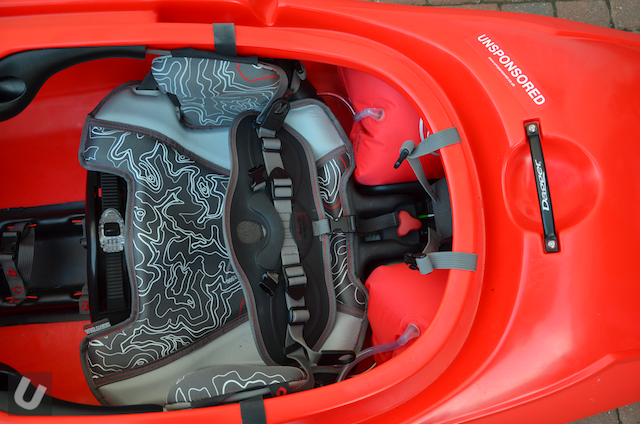
The Jitsu feels pretty wide when you are sat in it with the bulk of the volume centralised around the cockpit. This makes the cockpit area feel very much like a creek boat. I find that this is quite good as it makes the transition from the Jitsu to my Wavesport Recon and back again quite easy.

The remaining volume in the Jitsu appears to be evenly balanced between the bow and stern. The gives the Jitsu quite a great deal of stability when vertical. Whilst flat-water cartwheeling this can definitely be appreciated. The Jitsu feels more like an older slicer playboat than a bouncy poppy modern day and from my point of view this is definitely a good thing.
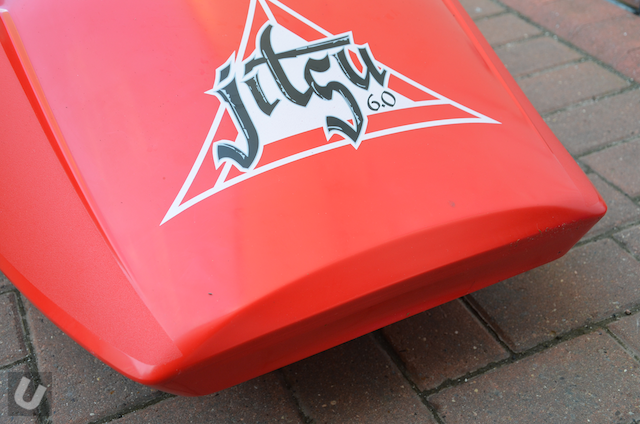
I have paddled the Jitsu in a number of locations over the last few months. Many of them have been out in the surf, and despite its short length the Jitsu is unbelievably quick, both to pick up a wave and to stay on/move across the face of the wave. On small river features the Jitsu is nimble and stable. Crank it up and the Jitsu simply flies. Whether it is on a small or big feature the Jitsu is super nice to paddle.
Dagger Jitsu 6.0:
Length: 6′ / 183 cm
Width: 27″ / 69 cm
Deck Height: 13.25″ / 34 cm
Cockpit Length: 34″ / 86 cm
Cockpit Width: 19″ / 48 cm
Boat Weight: 34 lbs / 15 kg
Paddler Weight: 165-245 lbs / 75-111 kgs
Volume: 63 gal / 239 L
Dagger Jitsu 5.9:
Length: 5′ 9.5″ / 178 cm
Width: 26″ / 66 cm
Deck Height: 12.5″ / 32 cm
Cockpit Length: 34″ / 86 cm
Cockpit Width: 19″ / 48 cm
Boat Weight: 31 lbs / 14 kg
Paddler Weight: 140-200 lbs / 64-91 kgs
Volume: 57 gal / 215 L
Dagger Jitsu 5.5:
Length: 5′ 6″ / 168 cm
Width: 25″ / 66 cm
Deck Height: 12″ / 30 cm
Cockpit Length: 34″ / 86 cm
Cockpit Width: 19″ / 48 cm
Boat Weight: 29 lbs / 13 kg
Paddler Weight: 90-155 lbs. / 64-91 kgs.
Volume: 48 gal / 182 L



















Any chance we could get tester stats? Weight/height/inseam/shoe size helps a lot especially for those of us considering the jitsu and riding the line between both sizes! Thanks for the info, best review on the web for sure!
In a 6.0. Size 10 feet (UK), 200lbs. Plenty of room on the boat.
Thanks! Psyched!